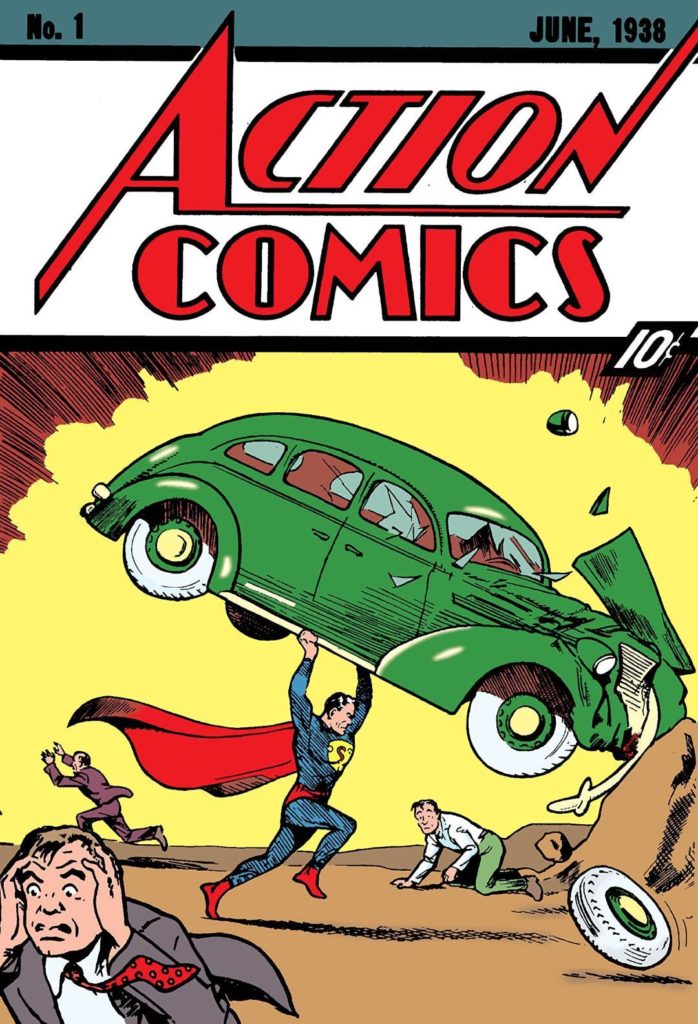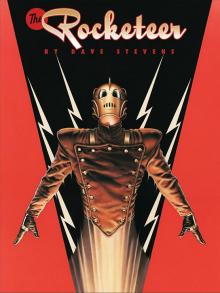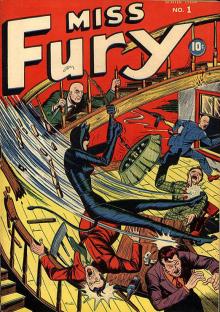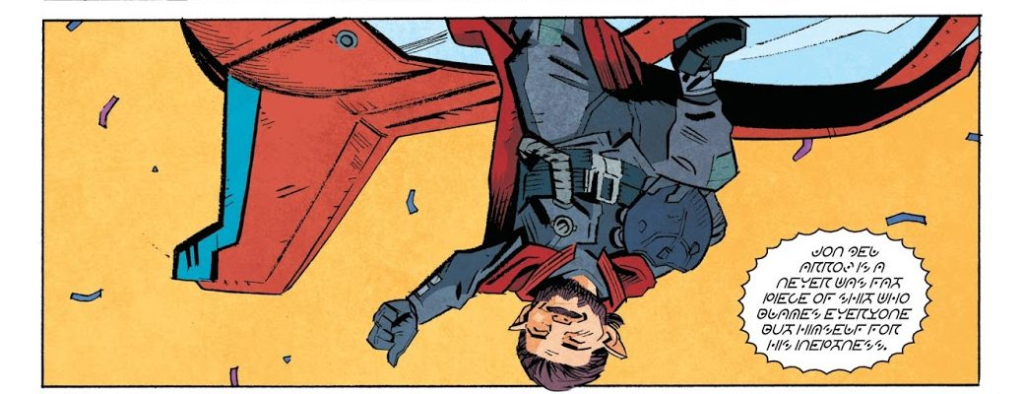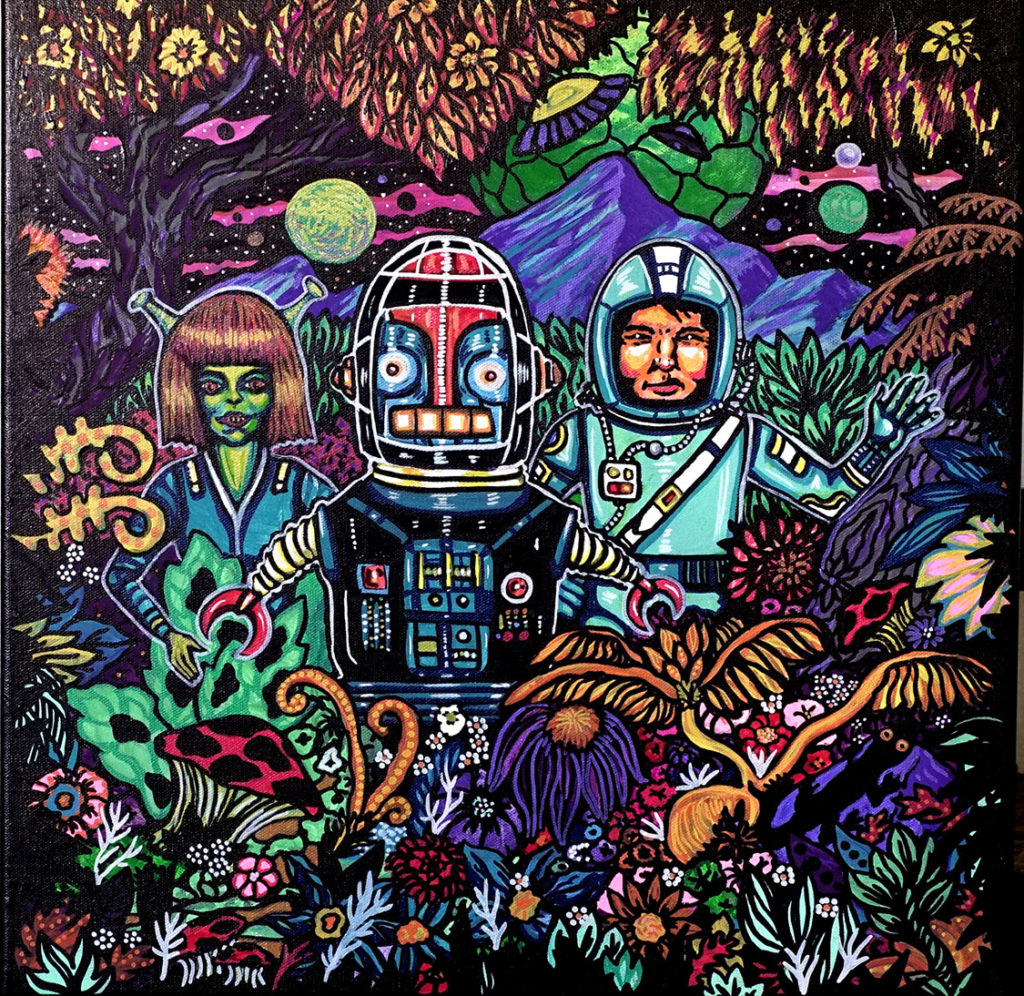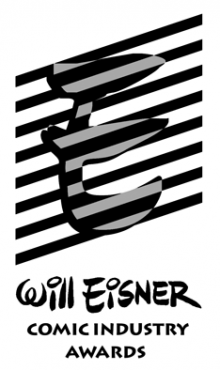
Comic-Con International has announced the nominations for the Will Eisner Comic Industry Awards 2020, chosen by a panel of judges.
The 2020 Eisner Awards judging panel consists of graphic novel reviewer Martha Cornog (Library Journal), comics journalist Jamie Coville (TheComicBooks.com), academic/author Michael Dooley (L.A. Art Center College of Design, Print magazine), comic writer/novelist Alec Grecian (Proof, Rasputin, The Yard), journalist/blogger/podcaster Simon Jimenez (longtome Comic-Con volunteer), and retailer Laura O’Meara (Casablanca Comics, Portland, ME).
“The judging process was very challenging this year,” says Eisner Awards Administrator Jackie Estrada. “Normally, the judges all meet in San Diego for four days in a room filled with all the submitted comics and books and they are able to interact with each other in person. With the country in lockdown, they all had to stay in their respective homes (as far away as Maine, Pennsylvania, Kansas, and Kingston, Ontario) so had to communicate via email, a social media group, and Zoom. Packages of books went back and forth all over the country. Fortunately, we were able to work with the folks at comiXology and many of the publishers to have digital versions of hundreds of submissions available to the judges.” She adds, “The process took two months longer than usual, so the window for voting is significantly shorter than in previous years. We encourage professionals in comics to cast their votes as soon as they can.”
Voting for the awards is held online, and the ballot will be available at www.eisnervote.com. All professionals in the comic book industry are eligible to vote. The deadline for voting is June 18. The results of the voting will be announced in July.
2020 Will Eisner Comic Industry Award Nominees
Best Short Story
- “Hot Comb,” by Ebony Flowers, in Hot Comb (Drawn & Quarterly)
- “How to Draw a Horse,” by Emma Hunsinger, The New Yorker, https://www.newyorker.com/humor/daily-shouts/how-to-draw-a-horse
- “The Menopause,” by Mira Jacob, The Believer, https://believermag.com/the-menopause/
- “You’re Not Going to Believe What I’m About to Tell You,” by Matthew Inman, The Oatmeal, https://theoatmeal.com/comics/believe
Best Single Issue/One-Shot
- Coin-Op No. 8: Infatuation, by Peter and Maria Hoey (Coin-Op Books)
- The Freak, by Matt Lesniewski (AdHouse)
- Minotäar, by Lissa Treiman (Shortbox)
- Our Favorite Thing Is My Favorite Thing Is Monsters, by Emil Ferris (Fantagraphics)
- Sobek, by James Stokoe (Shortbox)
Best Continuing Series
- Bitter Root, by David Walker, Chuck Brown, and Sanford Greene (Image)
- Criminal, by Ed Brubaker and Sean Phillips (Image)
- Crowded, by Christopher Sebela, Ro Stein, and Ted Brandt (Image)
- Daredevil, by Chip Zdarsky and Marco Checchetto (Marvel)
- The Dreaming, by Simon Spurrier, Bilquis Evely et al. (DC)
- Immortal Hulk, by Al Ewing, Joe Bennett, and Ruy José et al. (Marvel)
Best Limited Series
- Ascender, by Jeff Lemire and Dustin Nguyen (Image)
- Ghost Tree, by Bobby Curnow and Simon Gane (IDW)
- Little Bird by Darcy Van Poelgeest and Ian Bertram (Image)
- Naomi by Brian Michael Bendis, David Walker, and Jamal Campbell (DC)
- Sentient, by Jeff Lemire and Gabriel Walta (TKO)
Best New Series
- Doctor Doom, by Christopher Cantwell and Salvador Larocca (Marvel)
- Invisible Kingdom, by G. Willow Wilson and Christian Ward (Berger Books/Dark Horse)
- Once & Future, by Kieron Gillen and Dan Mora (BOOM! Studios)
- Something Is Killing the Children, by James Tynion IV and Werther Dell’Edera (BOOM! Studios)
- Undiscovered Country, by Scott Snyder, Charles Soule, Giuseppe Camuncoli, and Daniele Orlandini (Image)
Best Publication for Early Readers
- Comics: Easy as ABC, by Ivan Brunetti (TOON)
- Kitten Construction Company: A Bridge Too Fur, by John Patrick Green (First Second/Macmillan)
- The Pigeon HAS to Go to School! by Mo Willems (Hyperion Books)
- A Trip to the Top of the Volcano with Mouse, by Frank Viva (TOON)
- ¡Vamos! Let’s Go to the Market, by Raúl the Third (Versify/Houghton Mifflin Harcourt)
- Who Wet My Pants? by Bob Shea and Zachariah Ohora (Little, Brown)
Best Publication for Kids
- Akissi: More Tales of Mischief, by Marguerite Abouet and Mathieu Sapin (Flying Eye/Nobrow)
- Dog Man: For Whom the Ball Rolls, by Dav Pilkey (Scholastic Graphix)
- Guts, by Raina Telgemeier (Scholastic Graphix)
- New Kid, by Jerry Craft (Quill Tree/HarperCollins)
- This Was Our Pact, by Ryan Andrews (First Second/Macmillan)
- The Wolf in Underpants, by Wilfrid Lupano, Mayana Itoïz, and Paul Cauuet (Graphic Universe/Lerner Publishing Group)
Best Publication for Teens
- Harley Quinn: Breaking Glass, by Mariko Tamaki and Steve Pugh (DC)
- Hot Comb, by Ebony Flowers (Drawn & Quarterly)
- Kiss Number 8, by Colleen AF Venable and Ellen T. Crenshaw (First Second/Macmillan)
- Laura Dean Keeps Breaking Up with Me, by Mariko Tamaki and Rosemary Valero-O’Connell (First Second/Macmillan)
- Penny Nichols, by MK Reed, Greg Means, and Matt Wiegle (Top Shelf)
Best Humor Publication
- Anatomy of Authors, by Dave Kellett (SheldonComics.com)
- Death Wins a Goldfish, by Brian Rea (Chronicle Books)
- Minotäar, by Lissa Treiman (Shortbox)
- Sobek, by James Stokoe (Shortbox)
- The Way of the Househusband, vol. 1, by Kousuke Oono, translation by Sheldon Drzka (VIZ Media)
- Wondermark: Friends You Can Ride On, by David Malki (Wondermark)
Best Anthology
- ABC of Typography, by David Rault (SelfMade Hero)
- Baltic Comics Anthology š! #34-37, edited by David Schilter, Sanita Muižniece et al. (kuš!)
- Drawing Power: Women’s Stories of Sexual Violence, Harassment, and Survival, edited by Diane Noomin (Abrams)
- Kramer’s Ergot #10, edited by Sammy Harkham (Fantagraphics)
- The Nib #2–4, edited by Matt Bors (Nib)
Best Reality-Based Work
- Good Talk: A Memoir in Conversations, by Mira Jacob (One World/Random House)
- Grass, by Keum Suk Gendry-Kim, translation by Janet Hong (Drawn & Quarterly)
- Kid Gloves: Nine Months of Careful Chaos, by Lucy Knisley (First Second/Macmillan)
- Moonbound: Apollo 11 and the Dream of Spaceflight, by Jonathan Fetter-Vorm (Hill & Wang)
- My Solo Exchange Diary, vol. 2 (sequel to My Lesbian Experience with Loneliness), by Nagata Kabi, translation by Jocelyne Allen (Seven Seas)
- They Called Us Enemy, by George Takei, Justin Eisinger, Steven Scott, and Harmony Becker (Top Shelf)
Best Graphic Album—New
- Are You Listening? by Tillie Walden (First Second/Macmillan)
- Bezimena, by Nina Bunjevac (Fantagraphics)
- BTTM FDRS, by Ezra Claytan Daniels and Ben Passmore (Fantagraphics)
- Life on the Moon, by Robert Grossman (Yoe Books/IDW)
- New World, by David Jesus Vignolli (Archaia/BOOM!)
- Reincarnation Stories, by Kim Deitch (Fantagraphics)
Best Graphic Album—Reprint
- Bad Weekend by Ed Brubaker and Sean Phillips (Image)
- Clyde Fans, by Seth (Drawn & Quarterly)
- Cover, vol. 1, by Brian Michael Bendis and David Mack (DC/Jinxworld)
- Glenn Ganges: The River at Night, by Kevin Huizenga (Drawn & Quarterly)
- LaGuardia, by Nnedi Okorafor and Tana Ford (Berger Books/Dark Horse)
- Rusty Brown, by Chris Ware (Pantheon)
Best Adaptation from Another Medium
- Giraffes on Horseback Salad: Salvador Dali, the Marx Brothers, and the Strangest Movie Never Made, by Josh Frank, Tim Hedecker, and Manuela Pertega (Quirk Books)
- The Giver, by Lois Lowry and P. Craig Russell, (HMH Books for Young Readers)
- The Handmaid’s Tale: The Graphic Novel, by Margaret Atwood, adapted by Renee Nault (Nan A. Talese)
- HP Lovecraft’s At the Mountains of Madness, vols. 1–2, adapted by Gou Tanabe, translation by Zack Davisson (Dark Horse Manga)
- The Seventh Voyage, by Stanislaw Lem, adapted by Jon Muth, translation by Michael Kandel (Scholastic Graphix)
- Snow, Glass, Apples, by Neil Gaiman and Colleen Doran (Dark Horse Books)
Best U.S. Edition of International Material
- Diabolical Summer, by Thierry Smolderen and Alexandre Clerisse, translation by Edward Gauvin (IDW)
- Gramercy Park, by Timothée de Fombelle and Christian Cailleaux, translation by Edward Gauvin (EuroComics/IDW)
- The House, by Paco Roca, translation by Andrea Rosenberg (Fantagraphics)
- Maggy Garrisson, by Lewis Trondheim and Stéphane Oiry, translation by Emma Wilson (SelfMadeHero)
- Stay, by Lewis Trondheim and Hubert Chevillard, translation by Mike Kennedy (Magnetic Press)
- Wrath of Fantômas, by Olivier Bouquet and Julie Rocheleau, translation by Edward Gauvin (Titan)
Best U.S. Edition of International Material—Asia
- BEASTARS, by Paru Itagaki, translation by Tomo Kimura (VIZ Media)
- Cats of the Louvre, by Taiyo Matsumoto, translation by Michael Arias (VIZ Media)
- Grass, by Keum Suk Gendry-Kim, translation by Janet Hong (Drawn & Quarterly)
- Magic Knight Rayearth 25th Anniversary Edition, by CLAMP, translation by Melissa Tanaka (Kodansha)
- The Poe Clan, by Moto Hagio, translation by Rachel Thorn (Fantagraphics)
- Witch Hat Atelier, by Kamome Shirahama, translation by Stephen Kohler (Kodansha)
Best Archival Collection/Project—Strips
- Cham: The Best Comic Strips and Graphic Novelettes, 1839–1862, by David Kunzle (University Press of Mississippi)
- Ed Leffingwell’s Little Joe, by Harold Gray, edited by Peter Maresca and Sammy Harkham (Sunday Press Books)
- The George Herriman Library: Krazy & Ignatz 1916–1918, edited by R.J. Casey (Fantagraphics)
- Krazy Kat: The Complete Color Sundays, by George Herriman, edited by Alexander Braun (TASCHEN)
- Madness in Crowds: The Teeming Mind of Harrison Cady, by Violet and Denis Kitchen (Beehive Books)
- Pogo, Vol. 6: Clean as a Weasel, by Walt Kelly, edited by Mark Evanier and Eric Reynolds (Fantagraphics)
Best Archival Collection/Project—Comic Books
- Alay-Oop, by William Gropper (New York Review Comics)
- The Complete Crepax, vol. 5: American Stories, edited by Kristy Valenti (Fantagraphics)
- Jack Kirby’s Dingbat Love, edited by John Morrow (TwoMorrows)
- Moonshadow: The Definitive Edition, by J. M. DeMatteis, Jon J Muth, George Pratt, Kent Williams, and others (Dark Horse Books)
- Stan Sakai’s Usagi Yojimbo: The Complete Grasscutter Artist Select, by Stan Sakai, edited by Scott Dunbier (IDW)
- That Miyoko Asagaya Feeling, by Shinichi Abe, translation by Ryan Holmberg, edited by Mitsuhiro Asakawa (Black Hook Press)
Best Writer
- Bobby Curnow, Ghost Tree (IDW)
- MK Reed and Greg Means, Penny Nichols (Top Shelf)
- Mariko Tamaki, Harley Quinn: Breaking Glass (DC); Laura Dean Keeps Breaking Up with Me (First Second/Macmillan); Archie (Archie)
- Lewis Trondheim, Stay (Magnetic Press); Maggy Garrisson (SelfMadeHero)
- G. Willow Wilson, Invisible Kingdom (Berger Books/Dark Horse); Ms. Marvel (Marvel)
- Chip Zdarsky, White Trees (Image); Daredevil, Spider-Man: Life Story (Marvel); Afterlift (comiXology Originals)
Best Writer/Artist
- Nina Bunjevac, Bezimena (Fantagraphics)
- Mira Jacob, Good Talk (Random House); “The Menopause” in The Believer (June 1, 2019)
- Keum Suk Gendry-Kim, Grass (Drawn & Quarterly)
- James Stokoe, Sobek (Shortbox)
- Raina Telgemeier, Guts (Scholastic Graphix)
- Tillie Walden, Are You Listening? (First Second/Macmillan)
Best Penciller/Inker or Penciller/Inker Team
- Ian Bertram, Little Bird (Image)
- Colleen Doran, Snow, Glass, Apples (Dark Horse)
- Bilquis Evely, The Dreaming (DC)
- Simon Gane, Ghost Tree (IDW)
- Steve Pugh, Harley Quinn: Breaking Glass (DC)
- Rosemary Valero-O’Connell, Laura Dean Keeps Breaking Up with Me (First Second/Macmillan)
Best Painter/Digital Artist
- Didier Cassegrain, Black Water Lilies (Europe Comics)
- Alexandre Clarisse, Diabolical Summer (IDW)
- David Mack, Cover (DC)
- Léa Mazé, Elma, A Bear’s Life, vol. 1: The Great Journey (Europe Comics)
- Julie Rocheleau, Wrath of Fantômas (Titan)
- Christian Ward, Invisible Kingdom (Berger Books/Dark Horse)
Best Cover Artist
- Jen Bartel, Blackbird (Image Comics)
- Francesco Francavilla, Archie, Archie 1955, Archie Vs. Predator II, Cosmo (Archie)
- David Mack, American Gods, Fight Club 3 (Dark Horse); Cover (DC)
- Emma Rios, Pretty Deadly (Image)
- Julian Totino Tedesco, Daredevil (Marvel)
- Christian Ward, Machine Gun Wizards (Dark Horse), Invisible Kingdom (Berger Books/Dark Horse)
Best Coloring
- Lorena Alvarez, Hicotea (Nobrow)
- Jean-Francois Beaulieu, Middlewest, Outpost Zero (Image)
- Matt Hollingsworth, Batman: Curse of the White Knight, Batman White Knight Presents Von Freeze (DC); Little Bird, November (Image)
- Molly Mendoza, Skip (Nobrow)
- Dave Stewart, Black Hammer, B.P.R.D.: The Devil You Know, Hellboy and the BPRD (Dark Horse); Gideon Falls (Image); Silver Surfer Black, Spider-Man (Marvel)
Best Lettering
- Deron Bennett, Batgirl, Green Arrow, Justice League, Martian Manhunter (DC); Canto (IDW); Assassin Nation, Excellence (Skybound/Image); To Drink and To Eat, vol. 1 (Lion Forge); Resonant (Vault)
- Jim Campbell, Black Badge, Coda (BOOM Studios); Giant Days, Lumberjanes: The Shape of Friendship (BOOM Box!); Rocko’s Modern Afterlife (KaBOOM!); At the End of Your Tether (Lion Forge); Blade Runner 2019 (Titan); Mall, The Plot, Wasted Space (Vault)
- Clayton Cowles, Aquaman, Batman, Batman and the Outsiders, Heroes in Crisis, Superman: Up in the Sky, Superman’s Pal Jimmy Olsen (DC); Bitter Root, Pretty Deadly, Moonstruck, Redlands, The Wicked + The Divine (Image); Reaver (Skybound/Image); Daredevil, Ghost-Spider, Silver Surfer Black, Superior Spider-Man, Venom (Marvel)
- Emilie Plateau, Colored: The Unsung Life of Claudette Colvin (Europe Comics)
- Stan Sakai, Usagi Yojimbo (IDW)
- Tillie Walden, Are You Listening? (First Second/Macmillan)
Best Comics-Related Periodical/Journalism
- Comic Riffs blog, by Michael Cavna, www.washingtonpost.com/entertainment/comics/
- The Comics Journal, edited by Gary Groth, RJ Casey, and Kristy Valenti (Fantagraphics)
- Hogan’s Alley, edited by Tom Heintjes (Hogan’s Alley)
- Inks: The Journal of the Comics Studies Society, edited by Qiana Whitted (Ohio State University Press)
- LAAB Magazine, vol. 4: This Was Your Life, edited by Ronald Wimberly and Josh O’Neill (Beehive Books)
- Women Write About Comics, edited by Nola Pfau and Wendy Browne, www.WomenWriteAboutComics.com
Best Comics-Related Book
- The Art of Nothing: 25 Years of Mutts and the Art of Patrick McDonnell (Abrams)
- The Book of Weirdo, by Jon B. Cooke (Last Gasp)
- Grunt: The Art and Unpublished Comics of James Stokoe (Dark Horse)
- Logo a Gogo: Branding Pop Culture, by Rian Hughes (Korero Press)
- Making Comics, by Lynda Barry (Drawn & Quarterly)
- Screwball! The Cartoonists Who Made the Funnies Funny, by Paul Tumey (Library of American Comics/IDW)
Best Academic/Scholarly Work
- The Art of Pere Joan: Space, Landscape, and Comics Form, by Benjamin Fraser (University of Texas Press)
- The Comics of Rutu Modan: War, Love, and Secrets, by Kevin Haworth (University Press of Mississippi)
- EC Comics: Race, Shock, and Social Protest, by Qiana Whitted (Rutgers University Press)
- The Peanuts Papers: Writers and Cartoonists on Charlie Brown, Snoopy & the Gang, and the Meaning of Life, edited by Andrew Blauner (Library of America)
- Producing Mass Entertainment: The Serial Life of the Yellow Kid, by Christina Meyer (Ohio State University Press)
- Women’s Manga in Asia and Beyond: Uniting Different Cultures and Identities, edited by Fusami Ogi et al. (Palgrave Macmillan)
Best Publication Design
- Grunt: The Art and Unpublished Comics of James Stokoe, designed by Ethan Kimberling (Dark Horse)
- Krazy Kat: The Complete Color Sundays, by George Herriman, designed by Anna-Tina Kessler (TASCHEN)
- Logo a Gogo, designed by Rian Hughes (Korero Press)
- Madness in Crowds: The Teeming Mind of Harrison Cady, designed by Paul Kopple and Alex Bruce (Beehive Books)
- Making Comics, designed by Lynda Barry (Drawn & Quarterly)
- Rusty Brown, designed by Chris Ware (Pantheon)
Best Digital Comic
- Afterlift, by Chip Zdarsky and Jason Loo (comiXology Originals)
- Black Water Lilies, by Michel Bussi, adapted by Frédéric Duval and Didier Cassegrain, translated by Edward Gauvin (Europe Comics)
- Colored: The Unsung Life of Claudette Colvin, by Tania de Montaigne, adapted by Emilie Plateau, translated by Montana Kane (Europe Comics)
- Elma, A Bear’s Life, vol. 1: The Great Journey, by Ingrid Chabbert and Léa Mazé, translated by Jenny Aufiery (Europe Comics)
- Mare Internum, by Der-shing Helmer (comiXology; gumroad.com/l/MIPDF)
- Tales from Behind the Window, by Edanur Kuntman, translated by Cem Ulgen (Europe Comics)
Best Webcomic
- Cabramatta, by Matt Huynh, http://believermag.com/cabramatta/
- Chuckwagon at the End of the World, by Erik Lundy, https://hollowlegcomics.tumblr.com/chuckwagon
- The Eyes, by Javi de Castro, https://www.javidecastro.com/theeyes
- Fried Rice Comic, by Erica Eng, https://friedricecomic.tumblr.com
- reMIND, by Jason Brubaker, https://is.gd/T7rafM
- Third Shift Society, by Meredith Moriarty, https://www.webtoons.com/en/supernatural/third-shift-society/list?title_no=1703
2020 Eisner Award Judges


